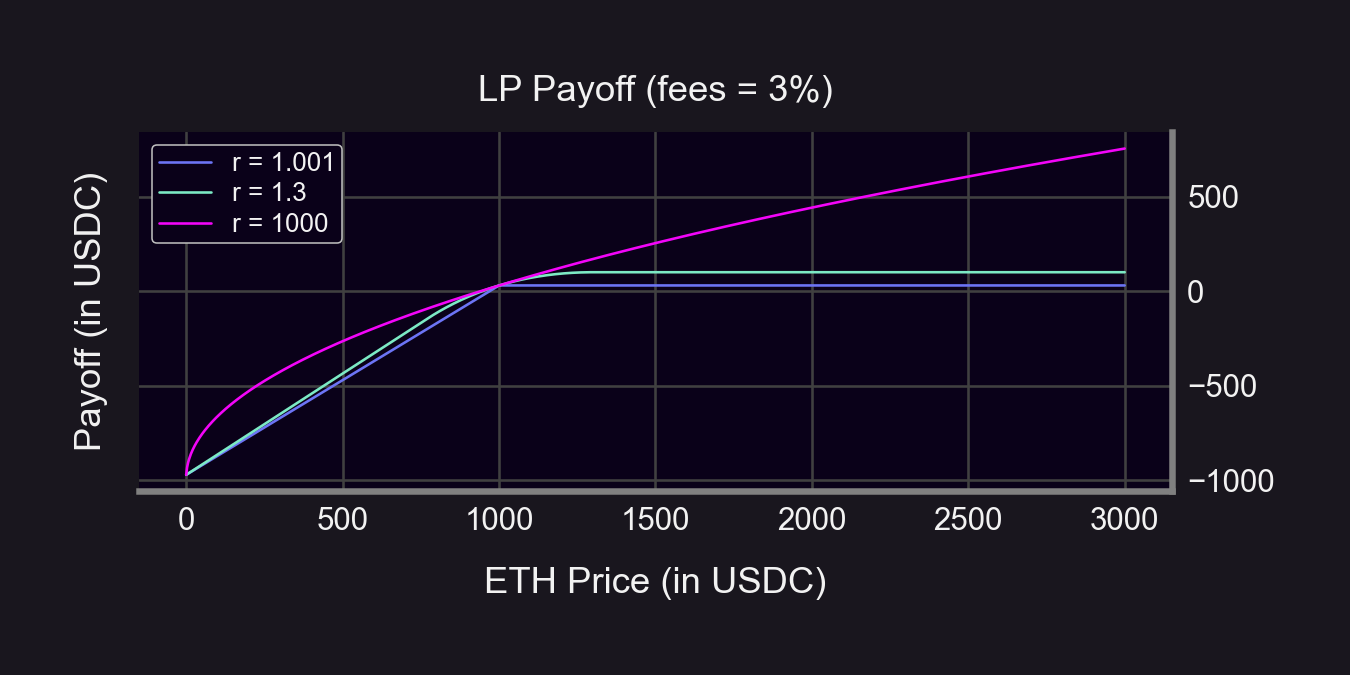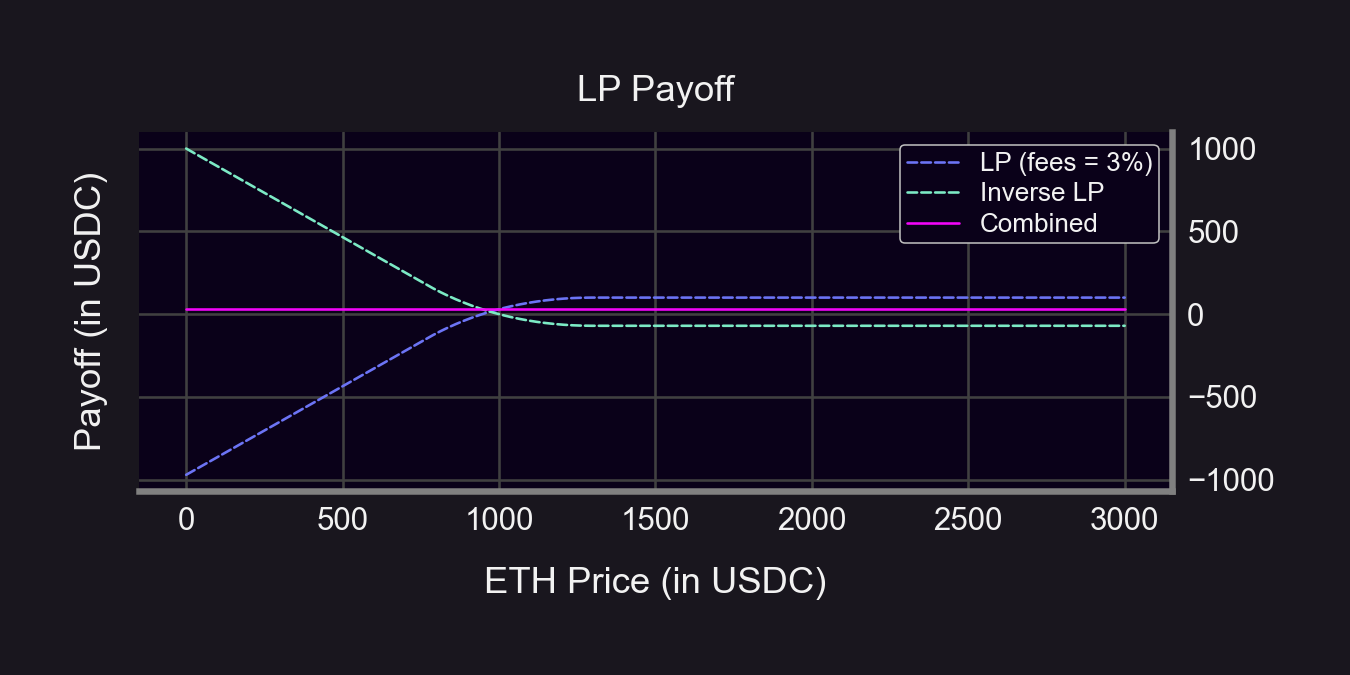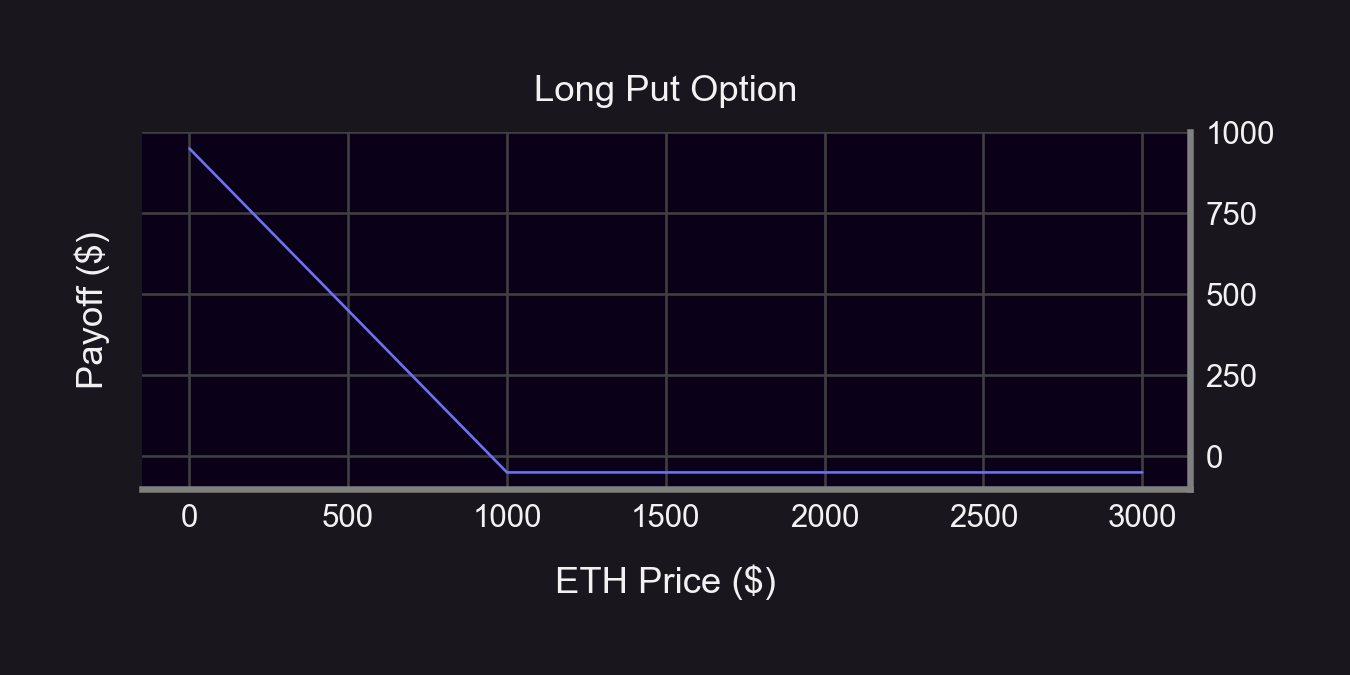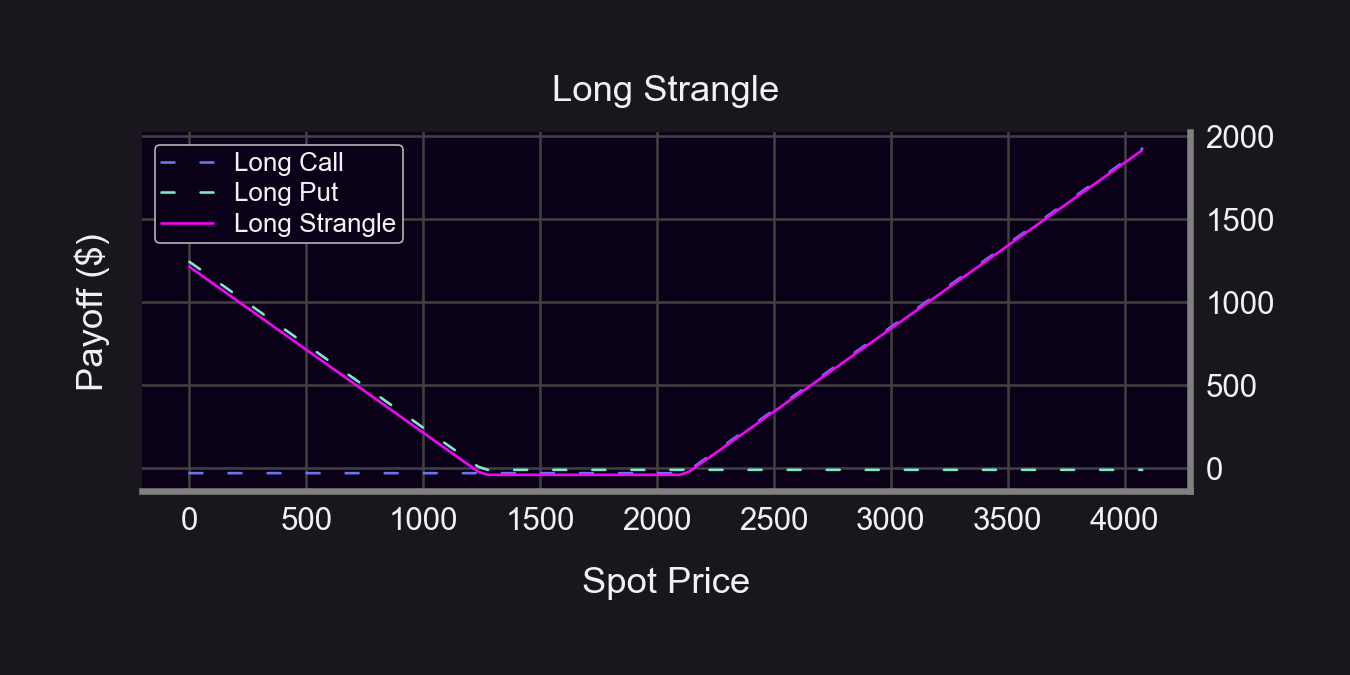How to hedge ANYTHING (including Uni v3 LP positions) with options
How to hedge ANYTHING (including UniV3 LP positions) with options 👇
Why options?
- Flexibility: Construct any payoff curve
- Greater protection: hedge against price going up AND down
- Capital efficiency: Low upfront cost for OTM puts/calls
Let's construct a hedge!
1. Identify your strategy's position.
Assume initial ETH price is $1,000. Let's start with 1,000 USDC. We sell 50% of that for ETH:
- x0 = 0.5 ETH
- y0 = 500 USDC
We LP 0.5 ETH & 500 USDC in the ETH-USDC pool.
2. Calculate the payoff curve for your strategy's position.
- Uni v2 LP value: V = 2L√S + fees
- S = (Spot) price of ETH
- L = √(x0 * y0)
Subtract our initial capital:

And for Uni v3...
- A bit more complicated than Uni v2
- Formula (while in range) by @guil_lambert here
- Example: r = 1.3 → ±30% LP range (see 🧵 for why)
1/13 Read our latest #ResearchBites from @brandonly1000 of the@Panoptic_xyz research team!
— Panoptic (@Panoptic_xyz) January 18, 2023
=====
How do you LP on UniV3 with a ±% range?
E.g. if you wanted ±30% should you do:
1) Lower: P * 70%
Upper: P * 130%
or
2) Lower: P / 1.3
Upper: P * 1.3
Let's find out!👇 pic.twitter.com/QChXAuIonz

where
3. Find an "inverted" payoff curve.
You want to hold a portfolio that pays the opposite. So just flip the payoff curve on its head. The goal is to flatten the curve into the pinkish line.
Example when r = 1.3 👇

4. Construct a portfolio replicating the inverse curve as closely as possible.
A long put option is a natural choice here since it benefits from $ movements down.

5. Finally, let's put them together.
Buy the hedge portfolio and hold it with your original position!
Assumptions:
- Initial ETH price = $1,000
- Long 1 ATM Put (strike = $1,000, DTE = 10)
- Put premium = $50
- LP fees = 3% (r = 1.3 ⇔ DTE ≈ 10)

How'd we do?
- S < $1,000: hedged payoff is flatter (and positive at times!)
- S $1,000: hedged payoff is lower (due to premium)
Hedging always costs $. We need to earn enough fees to cover the hedge price.
Summary
- Understand how your position reacts to price changes
- Find an opposite reaction
- Figure out what assets you can hold to mimic the opposite reaction (this is your hedge!)
- Buy the hedge (with Panoptic😉)!
- Take comfort knowing you're protected🛡️
What about impermanent loss (IL)?
- Notice we started with 100% of our capital in USDC.
- HODL portfolio of 100% USDC doesn't fluctuate → We already accounted for IL against a 100% USDC portfolio
But if we define IL against a 50/50 ETH-USDC HODL, we can hedge with a strangle:


What about hedging with perps?
Pros:
- More liquid
- More asset listings
- Static delta (no gamma!)
Cons:
- Less flexible: can only short/long at current contract price
- Pay funding rate (if on the "wrong" side)
- Static delta (no gamma...)
What about hedging with Squeeth?
Pros:
- More liquid
- Able to completely hedge delta/gamma
Cons:
- Only works for ETH-stablecoin pools
- High funding rates
What are the drawbacks to using options?
- Listings: no long-tailed assets on Deribit/OKX/Binance (just ETH/BTC)
- Illiquidity: lower liquidity on deep OTM options
- High maintenance: options expire + time decay
Panoptic solves this! Here's how 👇
Panoptic is permissionless:
- Listings: Permissionless pool creation on top of UniV3
- Liquidity: Permissionless LP for options at any strike price
- No expiry: XPOs are non-expiring, perpetual options
Read the whitepaper here.

Conclusion
Insights:
- LP positions look like short puts → LPers are selling options
- Only way to fully hedge an LP position is to short it
Only Panoptic enables shorting LP positions (any asset, any strike)!
- Broke: Hedging with expiring options
- Woke: Hedging with Panoptic XPOs
Disclaimer: This content is for educational purposes only and should not be relied upon as financial advice. Please DYOR!

